
HOME
INTRO
SYMBOLS
ALMANAC
ECONOMY
GEOGRAPHY
STATE MAPS
PEOPLE
FORUM
NEWS
COOL SCHOOLS
STATE QUIZ
STATE LINKS
BOOK STORE
MARKETPLACE
GUESTBOOK
CONTACT US


You may double left-click on a word on this page to retrieve its definition. Tweet Follow
Vermont State Tree
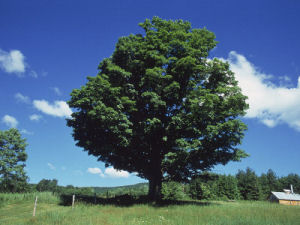
Vermont state tree: Sugar Maple
Photographs, prints, posters
The sugar maple tree became the official tree of Vermont through Senate Bill No. 3, approved by the Vermont State Legislature and signed by Governor Ernest W. Gibson, Jr.
No. 1 of the Acts of 1949, effective March 10, 1949, designated the Sugar Maple as the official State Tree. Probably no activity is so identified with Vermont as "sug'rin'," the production of maple syrup from the Sugar Maple. In late winter and early spring, sap is collected from the usually snow surrounded maple trees in a sugarbush and boiled in the sugarhouse to make syrup; in fact, Vermont has proclaimed "Maple" as in Maple Syrup, the official state flavor of the state.
In addition to the official state flavor of Vermont, the reds and yellows of the leaves of Acer saccharum are a key element in producing the scenic delights of Vermont's fall foliage.
------- from Office of the Secretary of State,
Vermont Legislative Directory and State Manual,
Biennial Session, 1993-1994, p. 13.
Though the Vermont Assembly did not specify it in their legislation, it is universally accepted that Vermont's official state tree, the sugar maple, is Acer saccharum.
Three other states have designated the sugar maple their official state tree. They include New York, West Virginia, and Wisconsin.
Vermont Law
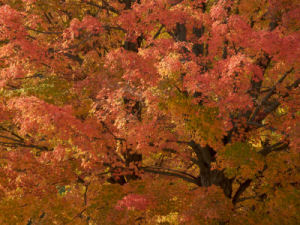
Vermont state tree: Sugar Maple in Autumn
Photographs, prints, posters
The following information was excerpted from the Vermont Statutes Online, Title 1, Chapter 11, Section 499.
Title 1: General Provisions
Chapter 11: FLAG, INSIGNIA, SEAL, ETC.
1 V.S.A. § 499. State tree
§ 499. State tree
The state tree shall be the sugar maple.
Sources...
Shearer, Benjamin F. and Barbara S. State Names, Seals, Flags and Symbols: A Historical Guide Third Edition, Revised and Expanded. Westport, Conn: Greenwood Press, 3 Sub edition, 2001.
"Vermont Emblems, Facts and Figures." Vermont Department of Libraries. State of Vermont, n.d. Web. 18 Feb 2012.
"Vermont Statutes Online." Vermont State Legislature. Vermont State Legislature, n.d. Web. 17 Feb 2012.
Additional Information
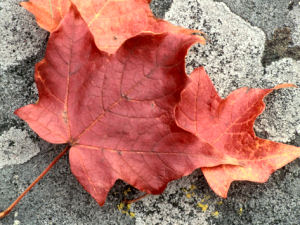
Autumn leaves
Photographs, prints, posters
The life of a sugar maple tree: Cornell Sugar Maple Research & Extension Program.
Acer saccharum Sugar Maple Aceraceae: University of Connecticut Plant Database of Trees, Shrubs and Vines.
Sugar maple (Acer saccharum Marsh): Tree Identification Fact Sheet from the Virginia Tech.
Sugar maple (Acer saccharum Marsh): Landowner Fact Sheet from the Virginia Tech.
Plant Profile for Acer saccharum Marsh (sugar maple): USDA, NRCS. 2011. The PLANTS Database (http://plants.usda.gov, 20 January 2011). National Plant Data Center, Baton Rouge, LA 70874-4490 USA.
Acer saccharum Marsh (sugar maple): United States Department of Agriculture: Forest Service: Agriculture Handbook 654: Silvics of North America.
CalPhotos Photo Database: Photographs of Acer saccharum from CalPhotos, a project of the Biodiversity Sciences Technology group (BSCIT), part of the Berkeley Natural History Museums at UC, Berkley.
State Trees: Complete list of official state trees from NETSTATE.COM.
More symbols & emblems: Complete list of official Vermont state symbols from NETSTATE.COM.
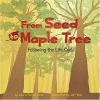
From Seed to Maple Tree
Laura Purdie Salas
From Seed to Maple Tree: Following the Life Cycle, by Laura Purdie Salas. 24 pages. Publisher: Picture Window Books (September 1, 2008) Reading level: Ages 4-8.
What does a seed need to grow? What color flowers does a sugar maple tree have? Let your mind bloom as you learn about the life cycle of a sugar maple tree.
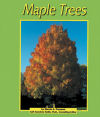
Maple Trees
Marcia S. Freeman
Maple Trees, by Marcia S. Freeman. 24 pages. Publisher: Capstone Press (September 1, 1998) Reading level: Ages 4-8.
Text and photographs describe the trunks, branches, leaves, seeds, and life cycle of maple trees.
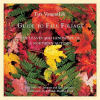
The Vermont Life
Guide to Fall Foliage
The Vermont Life Guide to Fall Foliage: The Leaves and Landscape of a Northern Autumn, by Charles W. Johnson and Gale Lawrence. 96 pages. Publisher: Vermont Life Magazine (July 20, 2007)
When to go, where to go, and what to look for when you?re in search of Vermont?s brilliant autumn colors. Includes 65 walking tours, nine maps and many photos. This book is a great companion for fall travels and is a wonderful reference book anytime. Noted Vermont naturalists Charles W. Johnson and Gale Lawrence describe in color-coded sections, each tree species and the autumn colors they produce. There are also chapters that detail each type of fall landscape with driving tours and recommended walks throughout the state, including directions. Illustrated with drawings by Adelaide Murphy along with rich color photos.
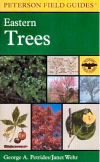
A Field Guide to
Eastern Trees
George A. Petrides
A Field Guide to Eastern Trees (Peterson Field Guides) , by George A. Petrides. 448 pages. Houghton Mifflin Harcourt; 2nd edition (July 15, 1998)
This field guide features detailed descriptions of 455 species of trees native to eastern North America, including the Midwest and the South. The 48 color plates, 11 black-and-white plates, and 26 text drawings show distinctive details needed for identification. Color photographs and 266 color range maps accompany the species descriptions.
A Field Guide to Trees and Shrubs, by George A. Petrides. 464 pages. Houghton Mifflin Harcourt; Second Edition (September 6, 1973)
All the wild trees, shrubs, and woody vines in the area north to Newfoundland, south to North Carolina and Tennessee, and west to the Dakotas and Kansas are described in detail. Accounts of 646 species include shape and arrangement of leaves, height, color, bark texture, flowering season, and fruit. Clear, accurate drawings illustrate leaves, flowers, buds, tree silhouettes, and other characteristics.
National Audubon Society Field Guide to North American Trees: Eastern Region, by Elbert Luther Little. 716 pages. Knopf; Chanticleer Press Ed edition (May 12, 1980)
Tree peepers everywhere will enjoy these two guides which explore the incredible environment of our country's forests-including seasonal features, habitat, range, and lore. Nearly 700 species of trees are detailed in photographs of leaf shape, bark, flowers, fruit, and fall leaves -- all can be quickly accessed making this the ideal field guide for any time of year.
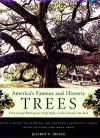
America's Famous
and Historic Trees
Jeffrey G. Meyer
America's Famous and Historic Trees: From George Washington's Tulip Poplar to Elvis Presley's Pin Oak (Hardcover) by Jeffrey G. Meyer. 130 pages. Houghton Mifflin Harcourt; F First Edition (April 20, 2001)
America's Famous and Historic Trees tells the stories of various trees that Meyer and his cohorts rescued or propagated: oftentimes, when trees were going to be cut down, he and his workers headed off the bulldozers, rescuing the tree with their massive tree hoe. Other trees--like the Indian Marker Pecan in southeast Dallas--were propagated before they died.
Trees: National Champions (MIT Press) by Barbara Bosworth. 144 pages. The MIT Press; First Edition (August 19, 2005)
Bosworth captures the ineffable grace and dignity of trees with clarity and directness: the green ash that shades a Midwestern crossroads, the common pear that blooms in a Washington field, and the Florida strangler fig with its mass of entwining aerial roots. Her black and white photographs, panoramic views taken with an 8 x 10 camera, show the immensity of the largest species and the hidden triumphs of the smallest
Gardening Tools: Pruners, rakes, shovels, hoes, trowels, cultivators and tillers, greenhouses, yard carts and more.

